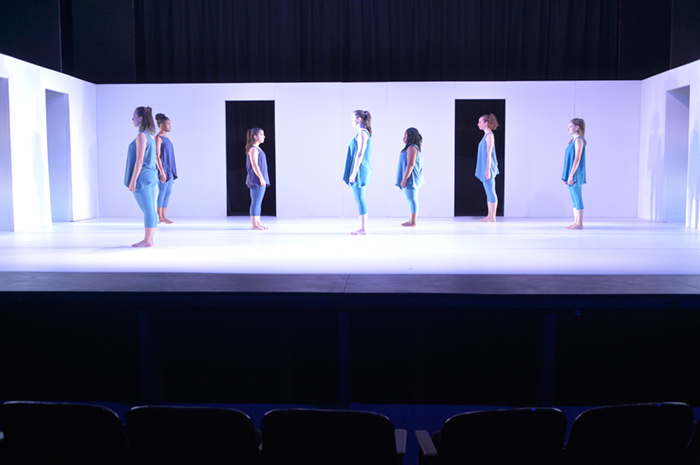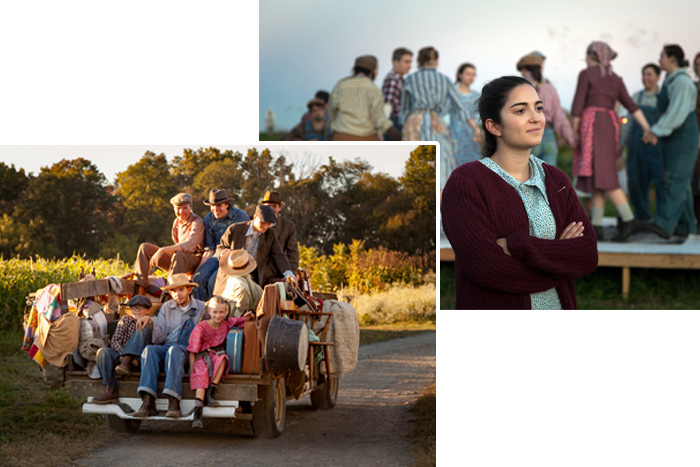Tearing Down the Walls

Photo by A. Pierce Bounds ’71
by MaryAlice Bitts-Jackson
The Department of Theatre & Dance’s fall productions broke the mold in low- and high-tech ways. While the Mermaid Players took audiences on an open-air journey, on foot and by wagon, the Dance Theatre Group (DTG) led a virtual trip, via multimedia, social media and apps.
The actors in the Alumni Weekend adaptation of The Grapes of Wrath, directed by Professor of Theatre Karen Kirkham, portrayed a family’s journey from Oklahoma to California by traveling with audiences to 14 sets on the College Farm. To connect the play’s Depression-era themes—hunger, class structure, land ownership—with local, contemporary experiences, Assistant Professor of Theatre Design Kent Barrett dressed each station with large, black-and-white photos of Harrisburg, tent-city residents, area farmers and farms.
There were special considerations: The sets incorporated biodegradable materials, like wheat paste. Set elements, usually tacked in place, were screwed to wooden frames, set in two-foot-deep concrete anchors that withstood wind and rain. The Center for Sustainability Education used Andrew W. Mellon funding to purchase portable, water-resistant LED lighting as well as supply bus transportation for audience members, cutting down on emissions and farm parking.
The actors adjusted to grazing cattle, hot, rainy rehearsals in limited daylight and 360-degree performances. Sarah Benamati ’18, who played three roles, learned to get in and out of character while traveling with the audience from scene to scene. “At one point, I was running to the next station while changing into my next costume,” she said.

Photos by Carl Socolow '77.
The weather also figured in. A full moon on opening night brought distraction and added beauty. Another night, a light rain fell.
“Some audience members said, ‘I only had to walk for an hour and a half—I can’t imagine what the characters went through,’ ” Kirkham said. “Their empathy was heightened as they walked in the drizzle.”
Immersive elements also were key to DTG’s production of iEcho, which invited audiences into an expansive virtual space. Director of Dance Sarah Skaggs conceived of iEcho’s theme in the wake of the 2016 presidential election. Using live dance, music, multimedia and social media, she conveyed the ways technology and social media shape perceptions and experiences.
The tech crew used seven projectors, three cameras, 300 lights and five computers to project images onto a white, three-sided, boxed-in set. One work used a live video-feedback loop to create a kaleidoscopic effect, suggesting an echo chamber. Another incorporated cell phones, sewn into dancers’ leotards. A third work used online polling—through an app, downloaded at the start of the performance—so audience members could vote on which moves the dancers would make next.
“It was sort of a mind-blowing experience, because it extended the boundaries of your visual imagination and the boundaries between the audience and performers,” said Skaggs, “by shifting the way we participate in what we see onstage.”
Read more from the winter 2018 issue of Dickinson Magazine.
TAKE THE NEXT STEPS
Published January 23, 2018